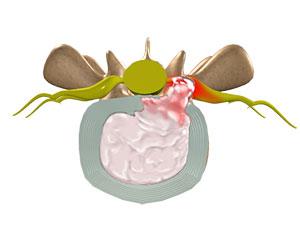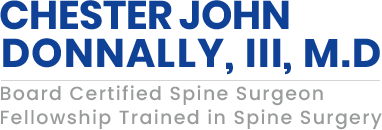Disc Herniations Get Better!

Disc Anatomy
Disc herniation is one of the common causes of back pain. The intervertebral discs are flat and round, present between the vertebrae and act as shock absorbers when you walk or run. There is a soft, gelatinous material in the center (nucleus pulposus) that is encased in strong elastic tissue to form a ring around it called annulus fibrosus.
What is a Disc Herniation?
Disc herniation is a condition where the central nucleus pushes through the outer edge of the disc, causing a bulge that compresses the spinal nerves.
Causes of Disc Herniation
Aging, injury or trauma may cause the annulus fibrosus to tear, resulting in protrusion of the nucleus pulposus. This may compress the spinal nerves and/or spinal canal. The bulging disc may even break open, releasing the gelatinous material, which is a chemical irritant, causing inflammation of the spinal nerves.
Obesity, sedentary lifestyle and smoking increase the risk of lumbar disc herniation.
Symptoms of Disc Herniation
The symptoms of lumbar disc herniation include:
- Mild to intense back pain, making it difficult to bend
- Numbness and weakness in the leg or foot leading to the sensation of tingling (pins and needles)
- Leg and/or feet pain making it difficult to walk or stand
- In rare cases, loss of bowel and bladder function (cauda equine syndrome), requiring immediate medical attention
Diagnosis of Disc Herniation
The diagnosis of disc herniation includes a thorough review of your medical history and a physical and neurological examination. Neurological examination is performed to indicate any neurological injury and involves the evaluation of reflexes and muscle weakness by various tests. To confirm the diagnosis, your doctor may order an MRI to evaluate changes in the disc and spinal nerves.
Treatment of Disc Herniation
Non-surgical Treatment of disc Herniation
Non-surgical treatment is preferred over surgery and includes rest, activity modification, and pain medication, which include non-steroidal anti-inflammatory drugs, muscle relaxants, and epidural analgesic injections. Back braces are recommended for a few days to keep the lower back still and reduce mechanical pain due to movement. Physical therapy or acupuncture may be helpful in some cases.
Surgery for disc Herniation
Surgery is considered in cases with significant leg pain, muscle weakness, and numbness that is unresolved after conservative treatment measures. Urgent surgery may be required if neurologic dysfunction or cauda equine syndrome occurs.
Microdiscectomy is the most commonly used surgical procedure for lumbar disc herniation. It involves the removal of part of the herniated disc causing nerve compression. It is a comparatively safe procedure, but some of the risks include infection, nerve damage, dural leak, or hematoma. Most patients undergoing surgery find significant respite in pain after the surgery.












